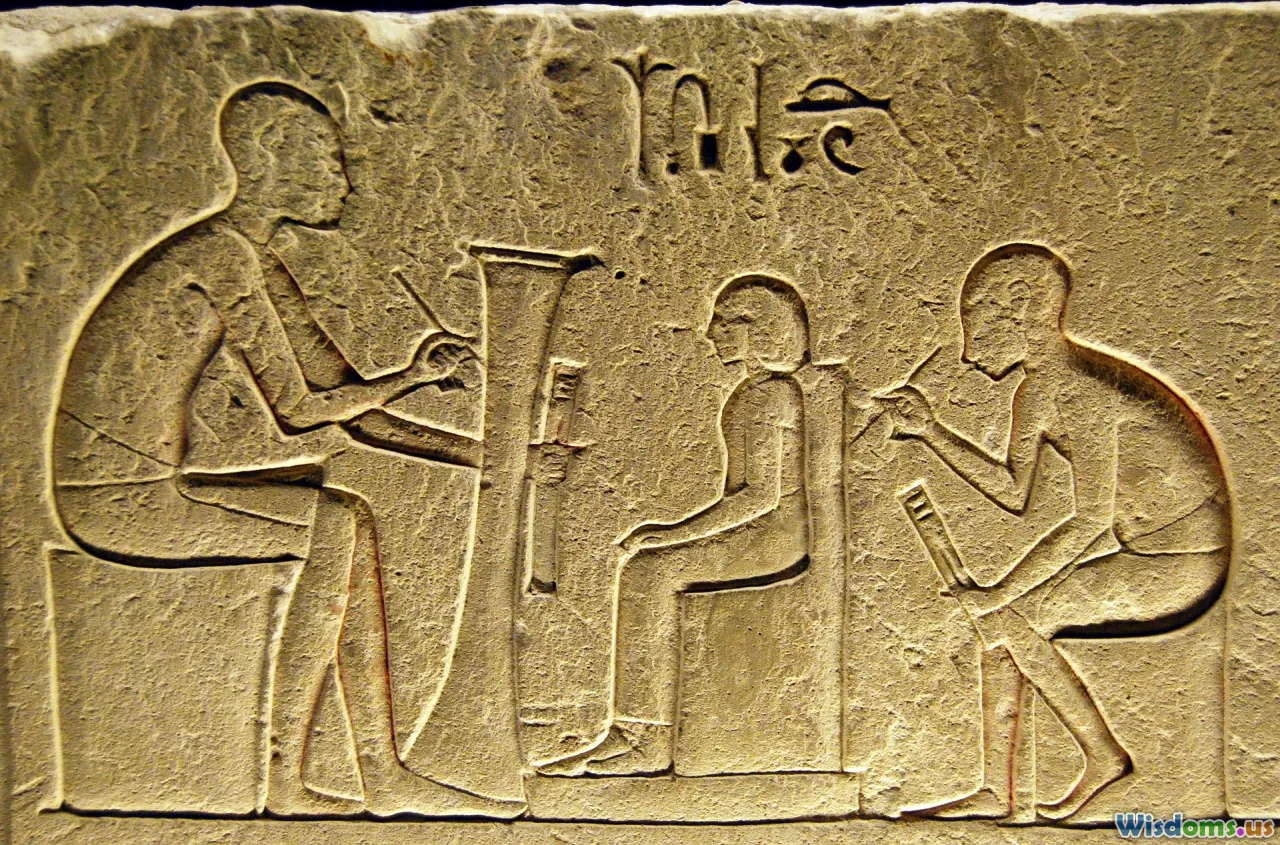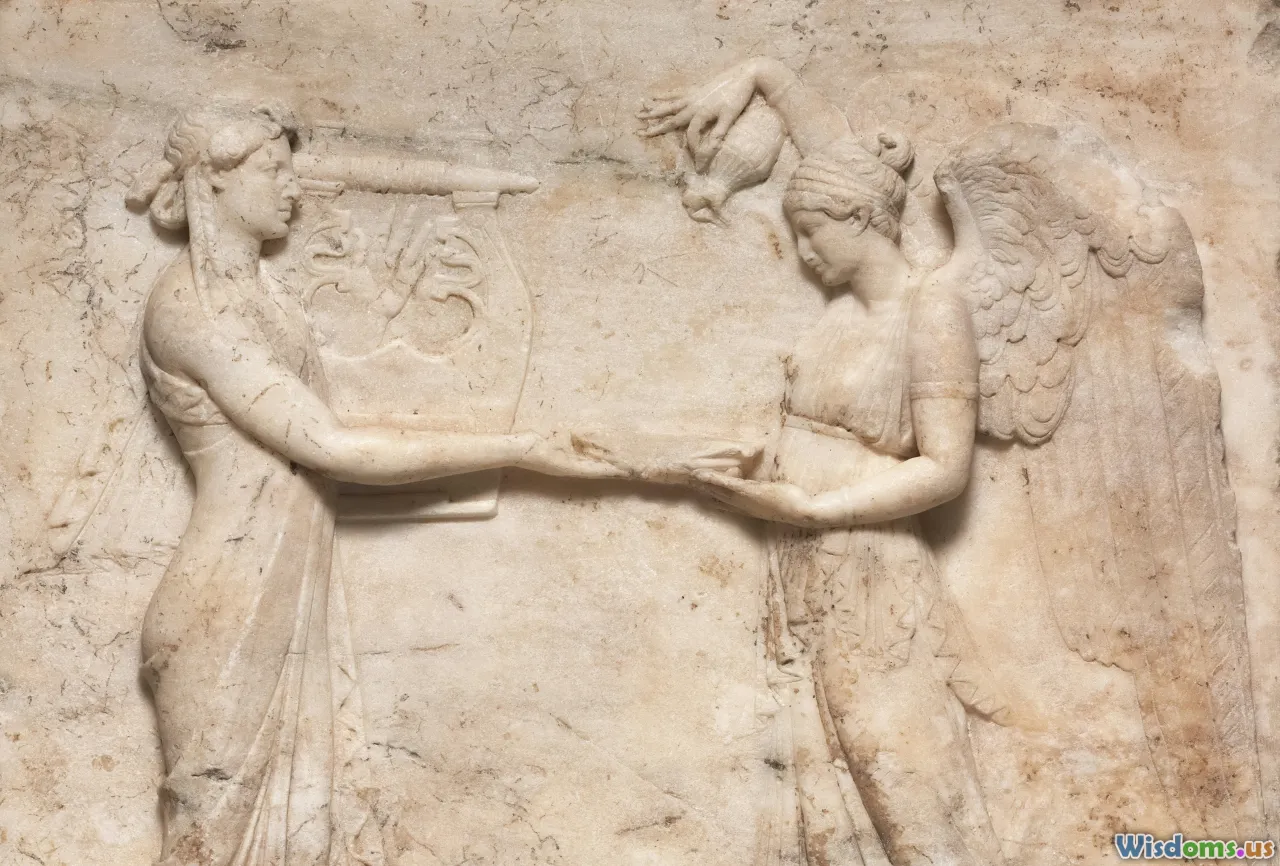
Secrets Behind Assyrian Psychological Warfare Revealed
15 min read Discover how the Assyrians mastered psychological warfare and changed ancient conflict strategies. (0 Reviews)
Secrets Behind Assyrian Psychological Warfare Revealed
Conceived as both brutal and brilliant, the Assyrian Empire's expansion over the ancient Near East was not simply a matter of superior soldiers or ingenious siege engines—though both were famed. At the beating heart of their domination was something less tangible but even more potent: advanced psychological warfare. Long before modern military strategists coined the term, the Assyrians had mastered the art of breaking the will of cities, kings, and whole populations without always unsheathing a sword.
Their secret? A sophisticated integration of fear, propaganda, meticulous choreography of violence, and the deliberate crafting of their own legend. Recent archaeological finds and meticulous translations of Assyrian records are beginning to lay bare these methods. If power starts in the mind, the Assyrians more than any ancient superpower understood how to claim it.
The Chilling Power of Image and Display

Among the Assyrians, the management of public image and spectacle went hand in hand with military conquest. In the great palaces of Nineveh, Nimrud, and Khorsabad, vast wall reliefs depicted graphic scenes: vanquished enemies decapitated, kneeling in chains, or paraded with rings through their lips. Modern excavations — see the friezes recovered from Ashurbanipal’s palace — underscore the point: these were not just records, but warnings diligently composed for maximum psychological effect.
In cities just conquered, captive dignitaries would be led before screaming crowds, their fates illustrated on palace walls for all to see. The message was clear: resistance leads to spectacular, widely advertised destruction. Tales of these events reached enemy rulers, carried deliberately by released prisoners, traders, and Assyrian heralds. In effect, every siege became both a battle and a theatrical broadcast, lasting long after the actual fighting ended.
Example:
- The Chronicler Sargon II personally supervised the display of thousands of severed heads after the 8th century BCE siege of Samaria. The result was a loyalty cascade—neighboring rulers in the Levant swiftly pledged tribute, rather than risk similar fates, their resolve broken more by anticipation than arms.
Fear Manipulation as a Weapon

While other empires might simply invade, the Assyrians set out to create legend. Psychological warfare began before armies marched, with chilling rumors sent ahead: whispers of immense armies (many of whom never marched), tales of weaponized gods, and vivid accounts of punishment awaiting rebels.
This mastery found expression in military rituals. On campaign, the Assyrian army often gathered captives on parade routes, where soldiers chanted victory hymns and performed coordinated, intimidating shows of force. The synchronization—spears glinting in the sun, tens of thousands moving as one organism—was not only impressive, but overwhelmed the senses of friend and foe alike.
Historical Fact:
- The Assyrian king Esarhaddon, before invading Egypt, spread rumors about the impregnable power of his armies and issued demands in cuneiform tablets to minor states. Psychological demoralization played a critical role: garrisons surrendered without a fight for fear of torture or extinction.
Complex Webs of Espionage and Misinformation

Psychological weaponry did not rely solely on spectacle. The Assyrians maintained intricate spy networks. Agents, scouts, and interpreters embedded in foreign courts ferreted out political discontent or seeded misinformation. Assyrian records document payments to informants within Babylon and Elam—proof of their sophisticated intelligence strategy.
False decrees and forged letters were also employed. Sometimes, rival leaders received fake messages—purportedly from a defector or an ally—advising surrender or sowing doubts about loyalty among their own ranks. These methods anticipated much later “black ops” or disinformation efforts.
Insight:
- In one campaign against the city of Arpad (modern Syria, 743 BCE), Assyrian envoys sent forged messages, allegedly from inside Arpad, claiming the city would open its gates on a given day. The defenders’ unity fractured, making the final assault a formality.
Propaganda and the Divine Right to Rule

Interestingly, perhaps the most potent psychological weapon in the Assyrian arsenal was divine propaganda. Presenting themselves as chosen instruments of gods—especially Ashur, their patron deity—Assyrian kings cast resistance as not only folly but sacrilege. In essence, their wars became holy wars, not mere conquests.
Kings documented every campaign on stelae and temple walls, with special emphasis on heavenly favor and supernatural omens. Official inscriptions everywhere repeated the claims: the wrath of Assyrian gods descends on rebels from within and beyond. Cities receiving these messages by wall inscription or in ceremonial deliveries faced not just occupation, but the fear that even their gods had forsaken them.
Example:
- Tiglath-Pileser III (reigned 745–727 BCE) described laying waste to hostile lands "with the fury of Ashur." Babylonian cities, already susceptible to portents, often capitulated after receiving such pronouncements, seeing defeat as foreordained by higher powers.
Strategic Use of Exile and Resettlement

Unlike empires that simply looted territories, the Assyrians professionalized mass deportation—the infamous policy of population translocation. Rather than let conquered regions regroup or rebel, the Assyrians forcibly resettled tens of thousands from threatened cities, scattering ethnicities and elites across new provinces. This deliberate dislocation destroyed identity and loyalty, turning potential resistance into confusion and demoralization.
Assyrian records — such as those in the annals of Sennacherib — routinely boast of moving 120,000 people or more at a campaign's close. These actions demonstrated power while sending a message: you can be torn from everything you know. Simultaneously, the Assyrians mixed loyal supporters into volatile zones, using new communities as eyes and ears for the crown. Psychological warfare here was cloaked in imperial policy.
Spotlight:
- After the conquest of Israel (722 BCE), some 27,000 Israelites were removed to other parts of the Empire and replaced by outsiders, fragmenting the opposition and stoking dependency on central power.
Script, Symbolism, and the Power of Storytelling

Assyria’s scribes crafted the narrative. In long inscriptions and clay tablets, scribes not only chronicled victories but elaborated legends featuring signs, dreams, and the miraculous intervention of gods. These official stories—sometimes wildly exaggerated—formed a body of myth history that sustained morale at home and shattered hope among adversaries.
Scribes also dispatched tablets inscribed for enemy audiences. Sometimes, envoys presented these missives theatrically, reading aloud the miseries awaiting the obstinate. Cities were forewarned: wise men, priests, oracles—all were compelled to decipher and disseminate Assyrians’ ominous prophecies. In this way, fear, persuasion, and myth blurred into a unified assault on the psychology of both subject and rival.
Case Study:
- During the siege of Lachish (modern Israel, c. 701 BCE), Assyrian envoys loudly proclaimed the fate of those who did not surrender—graphically stating in Hebrew (the defenders’ own language) that misery and starvation would follow, as famously depicted in biblical accounts (Isaiah 36–37).
Using Diplomacy as Psychological Chess

The Assyrians did not always march armies into conflict. Often, the threat of imminent, violent reprisal was backed by skillful diplomacy—one that exploited internal rivalries and fears among their opponents. Their embassies arrived bearing demands couched in intimidating language, but often included lavish gifts, promises of autonomy, and pacts sanctified by gods.
Essentially, Assyrian negotiators pitted neighbors against each other, encouraging defection or capitulation with the certainty of Assyrian support. City-states that bowed willingly received lucrative contracts; rebels, by contrast, were “erased” from public records, their names struck from king-lists and city monuments. The psychological bargain became clear: defiance yields oblivion; submission brings reward, or at the very least, survival.
Historical Instance:
- When Babylon rebelled in 689 BCE, King Sennacherib found allies in rival southern chieftains, whom he rewarded. Babylon’s lack of unified front—much as a result of Assyrian diplomacy—led to its cataclysmic destruction.
Harnessing Fear for Domestic Control

The reach of Assyrian psychological tactics was far from limited to foreigners. Within the empire, the same principles applied at home. Succession disputes, disloyal governors, and ambitious priests always posed threats; thus, public executions, purges, or staged loyalty ceremonies occurred regularly. Word of exemplary punishments circulated widely as warnings to all—sometimes actual, sometimes exaggerated for effect.
Assyrian kings often held sweeping ceremonies to celebrate victories or to reinforce the divine order. These events recast any dissent as treason not only to the king but the gods, sowing a deep-seated fear of stepping out of line.
Context:
- The annals of Ashurbanipal describe mass gatherings where prisoners were executed in view of thousands of citizens. This orchestrated violence was as much about deterring traitors as cowing potential enemies.
Lessons for Modern Psychological Warfare

If tactics honed by the Assyrians appear eerily modern, that is no coincidence. Shock and awe strategies, misinformation, calculated displays of power, and manipulation of cultural or religious beliefs echo through contemporary conflicts, propaganda, and statecraft. The psychological battles once fought on the Tigris are replayed in headlines, social media streams, and diplomatic summits today.
Actionable Insights:
- Messages crafted for the enemy’s deepest fears are more effective than brute force alone.
- Consistent narratives through art, ritual, and language shape perceptions over generations.
- Physical displays—whether parades or punitive actions—can be engineered to have effects far beyond their immediate targets.
- Effective use of spies and misinformation undermines resistance before a battle starts.
- Manipulating alliances and enmities through selective rewards and punishments keeps larger populations manageable and divided.
The ultimate secret of Assyrian psychological warfare is this: every battlefield is primarily a contest of minds. And while the empire that pioneered these strategies has long since vanished, the echoes of their cunning remain etched into the annals of power play everywhere.
Rate the Post
User Reviews
Popular Posts



















